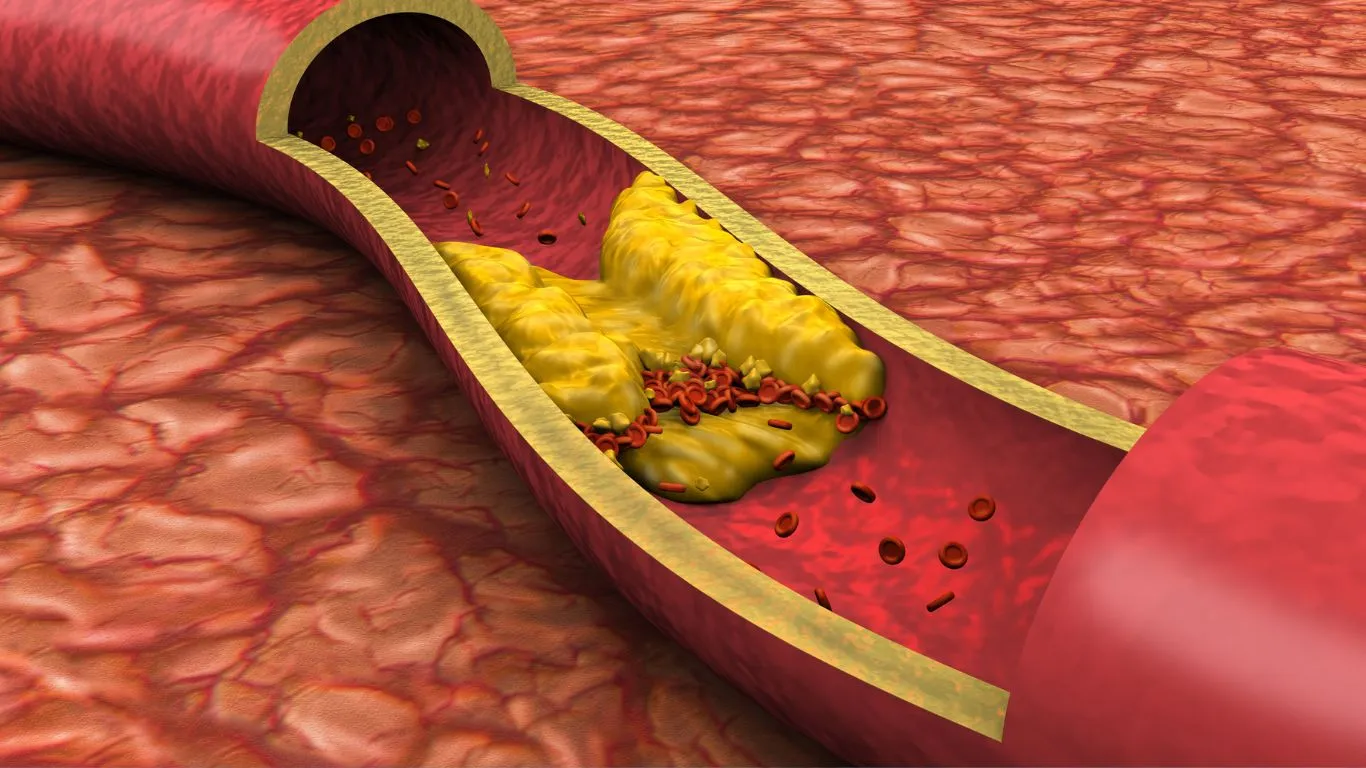
23 سبتمبر When is Atherosclerosis Dangerous?
Atherosclerosis occurs due to the accumulation of fatty substances and other materials on the walls of the arteries, causing them to narrow and restricting the free flow of blood through them.
It is important to note that if the condition persists without treatment and management, it may lead to complications.
One may wonder: “When is atherosclerosis considered dangerous?” This will be clarified by Dr. Amir Malkawi, a consultant in vascular surgery, in the following article, which will also discuss a range of health complications that may develop as a result of atherosclerosis if appropriate health measures are not taken to manage the disease.
When is atherosclerosis considered dangerous?
Atherosclerosis becomes dangerous in the advanced stages of the disease, where it leads to severe hardening and narrowing of the arteries supplying major organs such as the heart and kidneys, which results in impaired function of these organs.
Moreover, in severe cases, the fatty plaque that forms within the arteries may rupture, leading to the obstruction of one of the body’s arteries.
This can trigger the formation of a blood clot that travels through the bloodstream and causes serious health issues, such as a heart attack or stroke.
Complications of Atherosclerosis
Notable complications include:
Coronary Artery Disease and Angina
The relationship between atherosclerosis and coronary artery disease and angina can be explained as follows:
- In advanced stages, this condition can lead to the narrowing of the arteries that supply blood to the heart muscle, known as coronary arteries.
- This results in reduced blood flow to the heart and weakened heart muscle.
- Consequently, severe narrowing of the coronary arteries can lead to angina or a heart attack.
In some cases, a condition known as microvascular angina may develop, where a person experiences severe chest pain without any detectable blockage in the heart’s blood vessels upon imaging of the heart muscle.
Read More: Diabetic foot examination
Carotid Artery Disease
The relationship between atherosclerosis and carotid artery disease can be explained as follows:
- In severe cases, the carotid artery, which is the main artery responsible for supplying blood to the brain and is located in the neck, can become significantly narrowed.
- This narrowing increases the risk of blood clot formation, which can travel to the brain and cause a stroke.
- Consequently, this condition can lead to various other health complications.
Peripheral Artery Disease
The relationship between atherosclerosis and peripheral artery disease can be explained as follows:
- Atherosclerosis in the peripheral arteries, which are responsible for supplying blood to the limbs, leads to reduced delivery of nutrients and oxygen to the extremities.
- This reduction can result in decreased sensation in the limbs over time, with diminished ability to feel temperature changes such as heat and cold.
- This, in turn, increases the risk of burns or conditions such as frostbite.
- In severe cases of the disease, tissue and cell death in the limbs may occur, leading to tissue necrosis and other related health complications involving the nerves and muscles.
Cerebral Aneurysm
The relationship between atherosclerosis and cerebral aneurysm can be explained as follows:
- Atherosclerosis can cause weakening of one of the brain arteries, leading to the expansion of the artery wall and blood accumulation, known as an aneurysm or cerebral aneurysm.
- In some cases, if appropriate medical measures are not taken promptly, the weakened blood vessel may rupture, leading to a brain hemorrhage.
Chronic Kidney Disease
If this condition is severe in the arteries supplying the kidneys, it can lead to kidney dysfunction due to inadequate oxygen and nutrient delivery necessary for normal function.
This may ultimately result in the development of chronic kidney disease.
Intestinal Infarction or Mesenteric Ischemia
Scientifically known as mesenteric ischemia, this condition occurs as follows:
- In severe cases of atherosclerosis, fatty plaques may form in the blood vessels supplying the intestines.
- This leads to reduced or halted blood flow to certain sections of the intestines, resulting in tissue death.
- This health issue requires immediate medical intervention, as the death of intestinal tissue can allow resident bacteria to spread to other parts of the body, potentially leading to sepsis and other severe complications.
Finally, it is important to remember that prevention is better than cure.
Therefore, do not hesitate to visit Dr. Amir Malkawi’s clinic for a thorough evaluation of your condition and to take appropriate measures based on the findings.
References:
- Professional, C. C. M. (n.d.-b). Atherosclerosis. Cleveland Clinic. https://my.clevelandclinic.org/health/diseases/16753-atherosclerosis-arterial-disease
- What is atherosclerosis? | NHLBI, NIH. (2022, March 24). NHLBI, NIH. https://www.nhlbi.nih.gov/health/atherosclerosis
- Atherosclerosis. (n.d.). Heart and Stroke Foundation of Canada. https://www.heartandstroke.ca/heart-disease/conditions/atherosclerosis
- Martel, J. (2024, April 11). What is atherosclerosis? Healthline. https://www.healthline.com/health/atherosclerosis
- Carotid artery disease – Symptoms and causes – Mayo Clinic. (2023, April 19). Mayo Clinic. https://www.mayoclinic.org/diseases-conditions/carotid-artery-disease/symptoms-causes/syc-20360519
- Arteriosclerosis / atherosclerosis – Symptoms and causes – Mayo Clinic. (2022, July 1). Mayo Clinic. https://www.mayoclinic.org/diseases-conditions/arteriosclerosis-atherosclerosis/symptoms-causes/syc-20350569
- Professional, C. C. M. (n.d.-p). Mesenteric Ischemia. Cleveland Clinic. https://my.clevelandclinic.org/health/diseases/23246-mesenteric-ischemia
